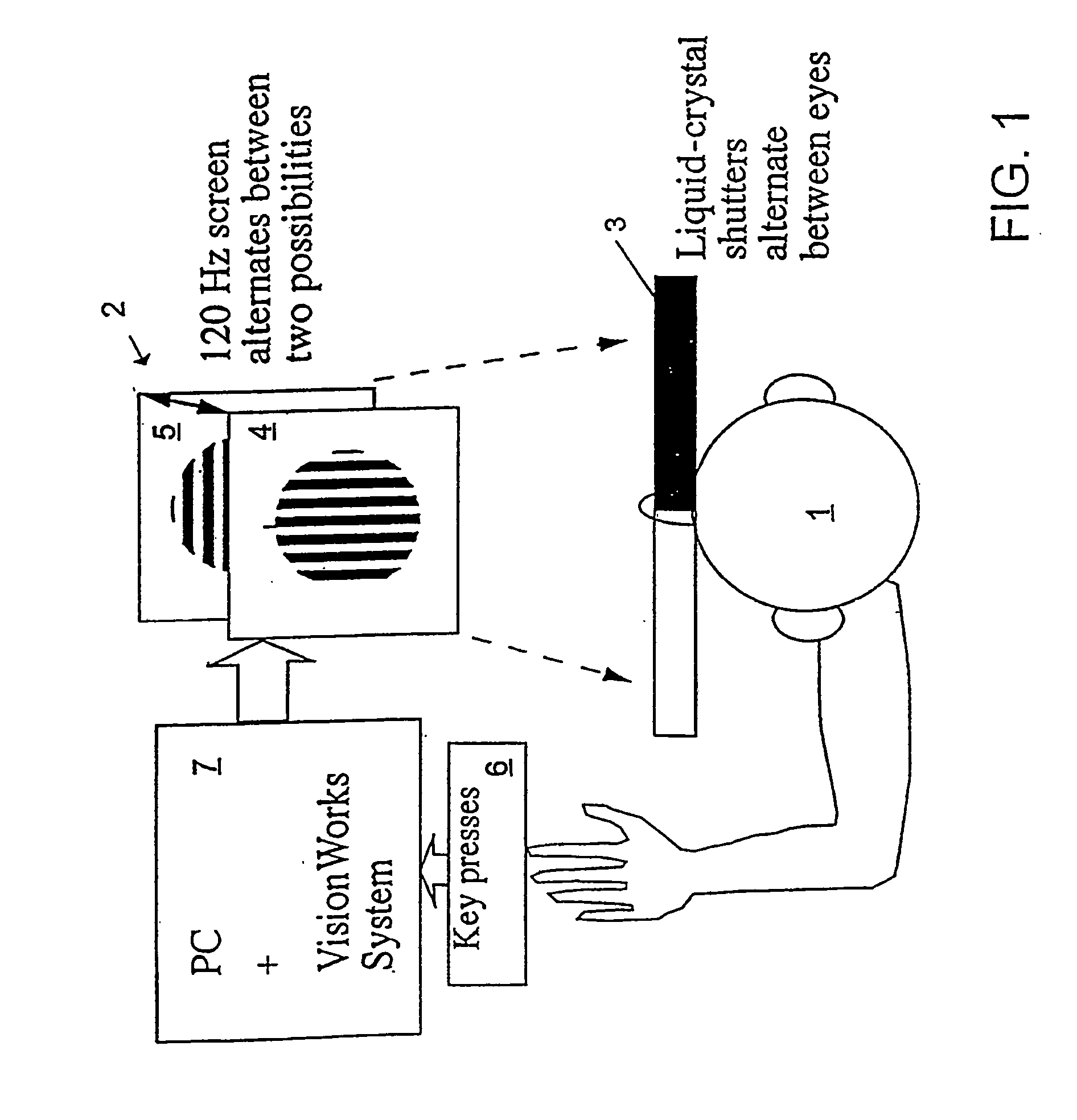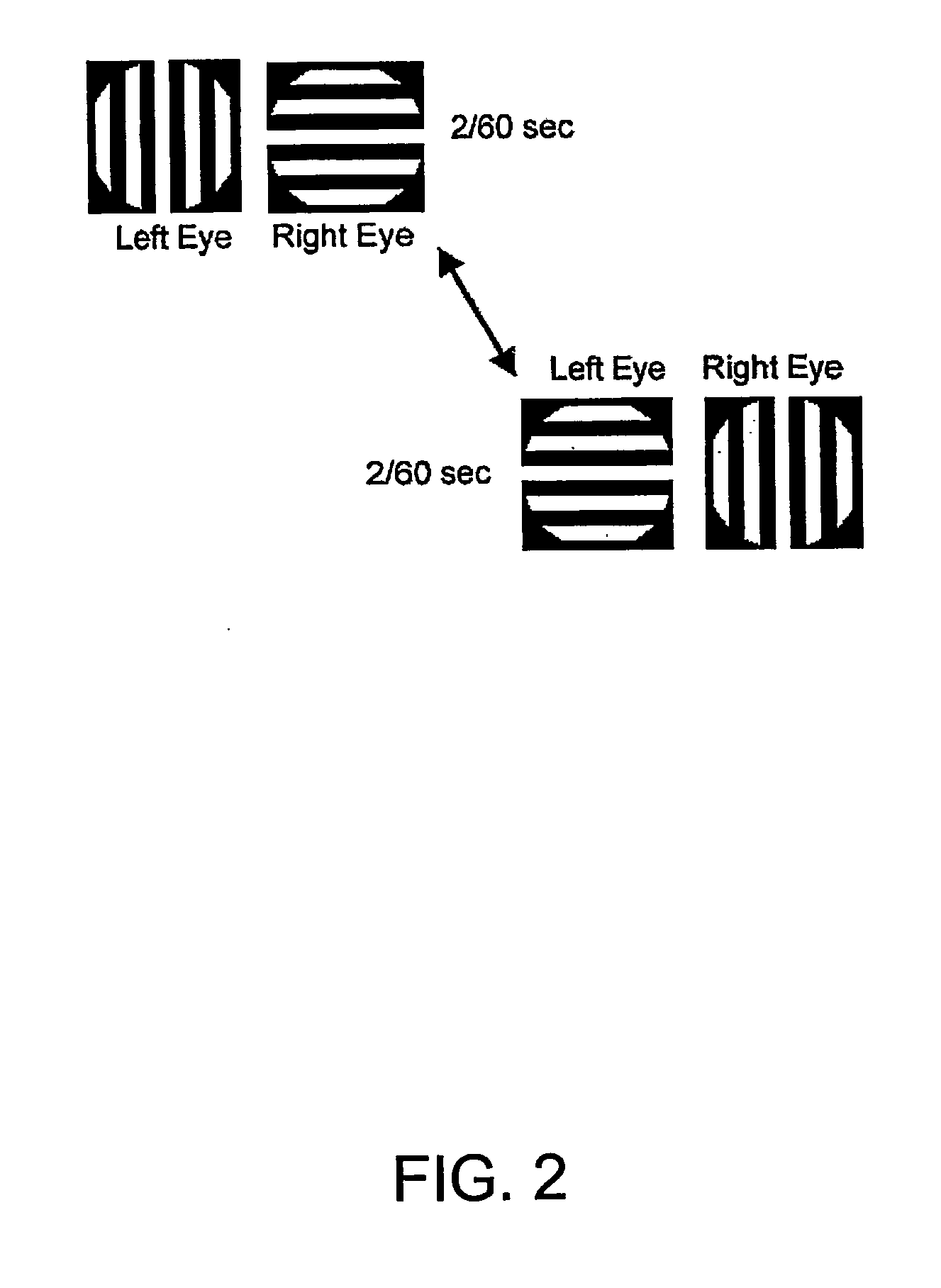Method and apparatus for diagnosing schizophrenia and schizophrenia subtype
a technology for schizophrenia and subtype, applied in the field of methods for diagnosing schizophrenic disorders, can solve the problems of high rate of patients and difficulty in accurately reporting perceptual alternations
- Summary
- Abstract
- Description
- Claims
- Application Information
AI Technical Summary
Benefits of technology
Problems solved by technology
Method used
Image
Examples
example 1
[0193] Subjects
[0194] Data were obtained from 24 individuals with chronic schizophrenia and 18 normal volunteers. The groups were balanced on age, sex, a quantitative measure of hand dominance and parental socioeconomic status (see Table 1).
[0195] Inclusion criteria for the patients with schizophrenia. (1) A diagnosis of schizophrenia which satisfied the criteria for the Structured Clinical Interview for DSM-IV (SCID) (First, 1996) (2) A stable condition with no major changes in symptomatology or psychosocial adjustment for two months prior to MRI scan and testing. (3) A likelihood ratio (hits / false alarms) of better than 3:1 in a signal detection task designed to reproduce the perceptual switches of binocular rivalry (see below and Table 3).
[0196] Exclusion criteria included: (1) any history of CNS illness, (2) head injury leading to loss of consciousness for greater than 5 minutes, (3) electroconvulsive therapy, (4) heavy alcohol, street drug or steroid use in the past 3 months...
example 2
[0198] Rivalry Procedure
[0199] The technique for eliciting binocular rivalry was similar to that already published, with two small targets presented foveally so that the right eye saw, for example, only a drifting horizontal grating and the left eye saw only a drifting vertical grating, in the same location (Pettigrew and Miller, 1998). The additional modification used here was dichoptic stimulus alternation (DSA), as described below.
[0200] Display. PC compatible computers equipped with ATI mach 64 video chipsets (eMachines eTower 333cs) ran custom software (written by KDW) to generate the rivalry stimuli in a frame sequential format, to measure responses, and to provide user interfaces. In the frame sequential format, odd numbered frames are presented to one eye while even numbered frames are presented to the other eye. The software was triggered by the video vertical synch, which caused one of two pages of the video RAM to be displayed. Then the software copied the next stimulus...
example 3
[0209] Assessment of Schizophrenia Symptoms
[0210] Schizophrenia symptoms may be assessed with the Positive and Negative Syndrome scale (PANSS) (Kay, Opler et al. 1992), incorporated herein by reference, an instrument that provides reliable quantitative ratings of 30 symptoms, which are divided into positive, negative, and general psychopathology subscales. Symptoms are rated on a 1-7 point scale from absent to extreme. The instrument contains measures of all the major psychotic symptom areas of interest except for inappropriate (incongruent) affect. Inappropriate affect is rated according to a scale modification (from 1-6 to 1-7 points) of the criteria used in the SAPS (Andreason 1984), incorporated herein by reference.
[0211] A range of symptoms, with addition of inappropriate affect, samples a major symptom clusters derived from factor analysis of numerous data sets. Clinical features of schizophrenia hypothesized to provide information regarding a course and severity of illness ...
PUM
 Login to View More
Login to View More Abstract
Description
Claims
Application Information
 Login to View More
Login to View More - R&D
- Intellectual Property
- Life Sciences
- Materials
- Tech Scout
- Unparalleled Data Quality
- Higher Quality Content
- 60% Fewer Hallucinations
Browse by: Latest US Patents, China's latest patents, Technical Efficacy Thesaurus, Application Domain, Technology Topic, Popular Technical Reports.
© 2025 PatSnap. All rights reserved.Legal|Privacy policy|Modern Slavery Act Transparency Statement|Sitemap|About US| Contact US: help@patsnap.com



